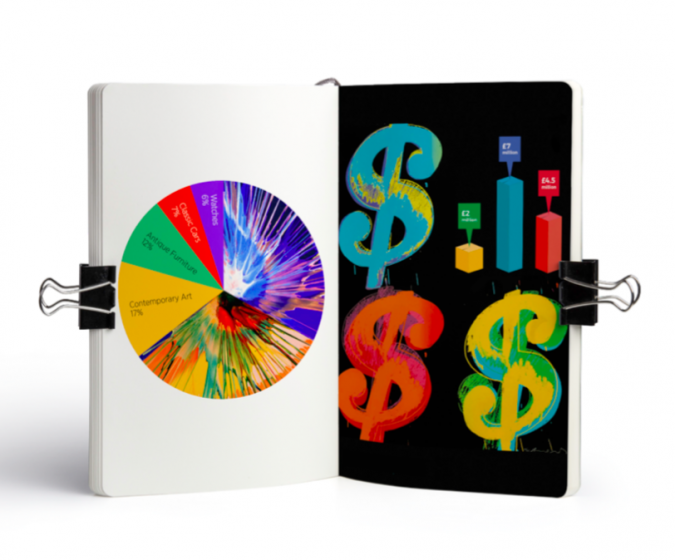ArtTactic and ValueMyStuff partner to publish the inaugural Valuations and Appraisals Market Report, which provides insider data on 49 different collector categories.
“Twice as many artworks get valued compared to being sold, so the art valuations and appraisals market is huge”
Behind every art work on the market is an individual, or perhaps several individuals, that has been tasked with valuing and appraising it. Valuation is an absolutely crucial aspect of the art market, yet the process of determining a financial value for works that are often referred to as “priceless” is a bit of a mystery for art world first-timers and industry experts alike. Knowing and understanding value is crucial in a market in which the financial credibility of an art object can be gained or lost in a single day.
And the appraisals market is not only important – it’s also gigantic: twice as many artworks are appraised than are sold. ArtTactic, in collaboration with ValueMyStuff, sheds light on one of the most important and least discussed aspects of the art market by launching the inaugural 2018 Valuations & Appraisals Market Report. With more than 1 million valuations completed through their website in the past 6 years, ValueMyStuff has brought the process of appraisals into the digital age. ArtTactic and ValueMyStuff have studied trends in the valuations sector in order to create a report that looks at the art and collectibles market through the eyes of an appraiser. The report offers a new perspective on a diverse number of sectors in the industry that often receive much less media attention than fine art, such as design, decorative furniture, carpets and rugs, clocks, tapestries, books, wine, and comic books, just to name a few.
One may associate appraisals with establishing the price of an object in order to sell it, but there more to appraisals than just sales. In addition to selling, valuations are necessary for insurance purposes, asset management purposes, and even for loaning against arts and collectible items. And while the valuation process has always been crucial for determining the worth of art and collectibles, new developments in the constantly evolving relationship between High Net Worth Individuals and the art market show that valuation practices are becoming more important than ever.
It is becoming increasingly important for HNWIs to take art and collectibles into consideration when reporting their wealth. After all, it seems morally ambiguous to exclude extremely expensive works of art when reporting your wealth to the government (see: Ivanka Trump’s $25 million art collection). Claiming that a collection is for “decorative and not investment purposes” may help collectors avoid this, but the truth is that more wealth managers than ever before cite a growing interest from their clients in including collectible assets in their wealth reports.
Another factor to take into consideration is how appraisals are used to quantify risk. The amount that HNWIs spend on art and collectibles is increasing, which means that wealth managers are attempting to quantify the risk associated with these assets. Establishing the value of an item, of course, rests at the center of the process of understanding the financial risk associated with it, making appraisals more relevant than ever for the top collectors.
Finally, there is a growing demand for standardization in the industry. Anders Petterson, CEO of ArtTactic explains, “Valuation of art and collectibles is often considered to be subjective – an art rather than a science”. While appraising art will always keep the air of mystery that its subjectivity brings, advancements in how the financial industry views art as an asset may require a more standardized approach for activities such as art -secured lending, art investment funds, and guarantees at auction. Petterson concludes: “…this does not mean that one would move to an Artificial Intelligence (AI) or purely data-driven approach, but that a combination of independent expert opinions alongside Big Data analytics would become the new standard for valuation in the art and finance industry.”
Overall, the report provides information that is useful to collectors of all shapes and sizes, from HNWIs that want art to decorate their yacht, to the coin collecting professor. It serves as a reminder of the extreme breadth and depth of sectors within the valuation and collecting sphere. With research that spans 49 different collecting categories, the Valuations & Appraisals Market Report is proof that, contrary to most coverage of the art market in the popular media, one can be a collector without buying uber expensive contemporary art.

